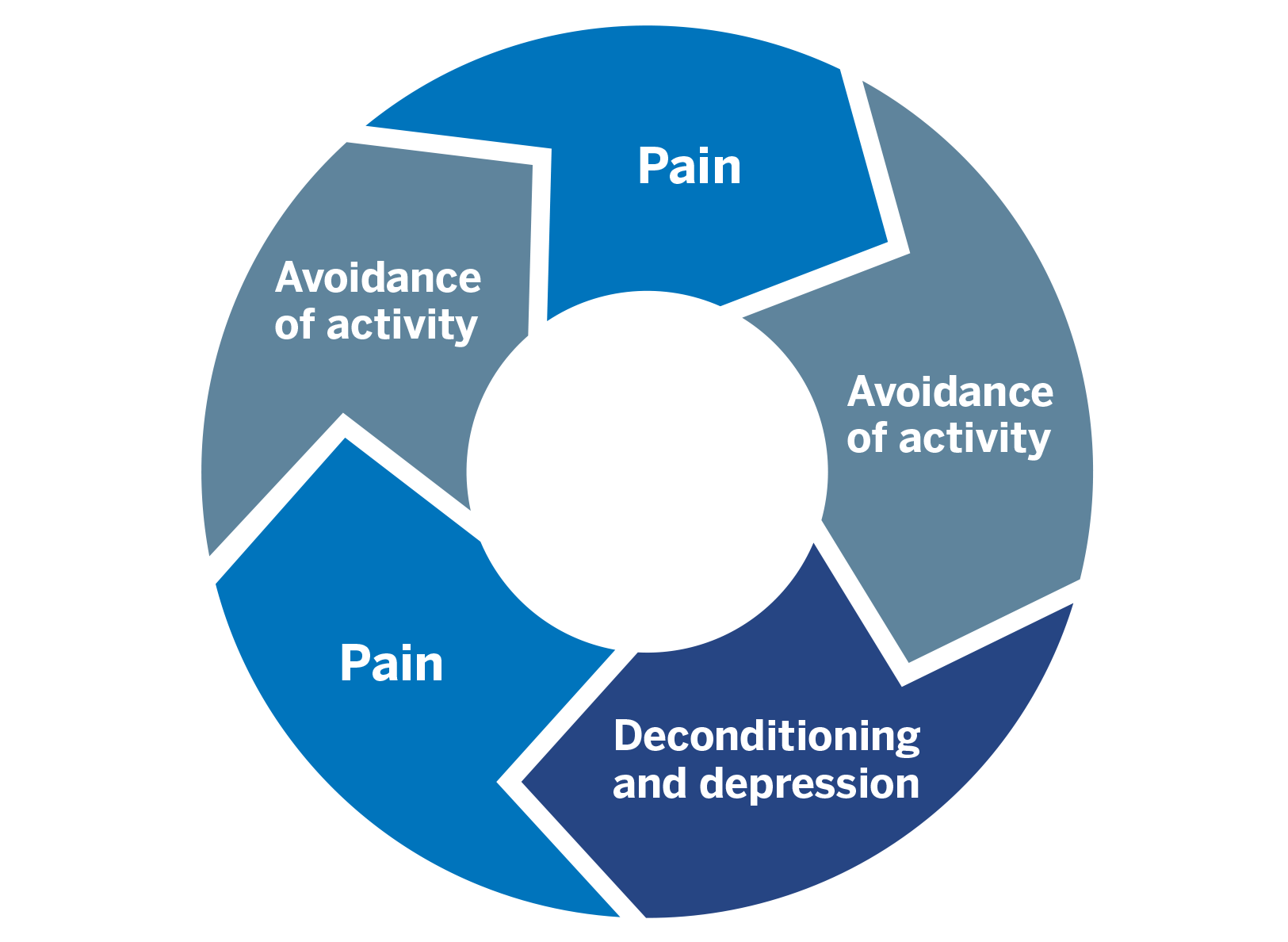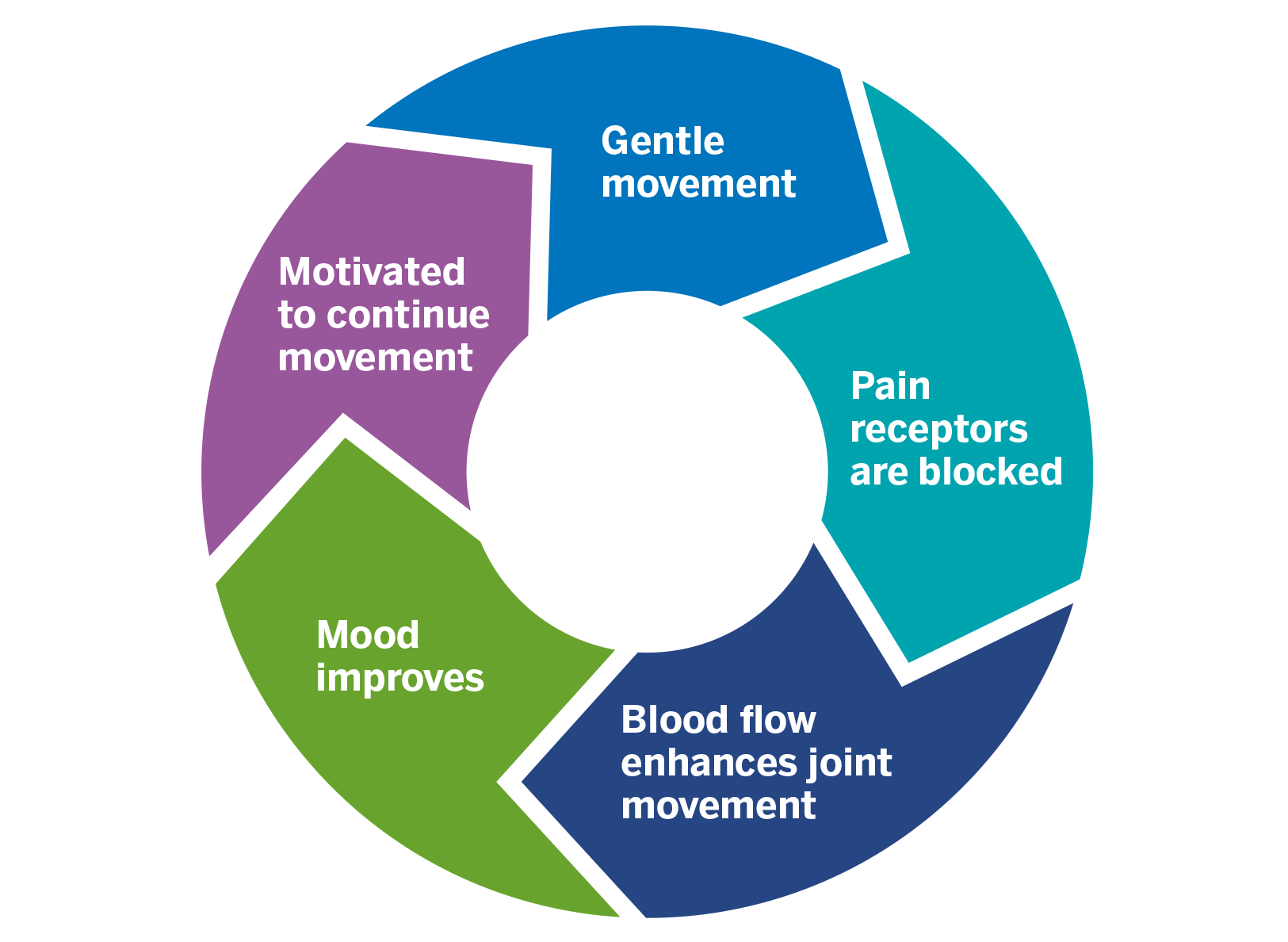
Advice to improve your movement, fitness, and overall health from the world's #1 in orthopedics.
Don’t Let Chronic Pain Keep You from Exercising
Chronic pain doesn't have to stop you from being physically active. In fact, movement can help relieve pain. We'll show you how to get started.
Advice to improve your movement, fitness, and overall health from the world's #1 in orthopedics.

What Is Chronic Pain?
Chronic pain is any pain that lasts for 3 to 6 months or more. Many people living with chronic pain have discomfort related to musculoskeletal conditions such as arthritis, degenerative disc disease and other issues impacting the joints and muscles of the body.
Living with perpetual discomfort can take its toll. It can also affect you in other ways as well, such as by:
- increasing symptoms of anxiety and depression
- disrupting sleep
- affecting your engagement in personal relationships
- impairing your quality of life
Why You Hurt
Pain is a feeling stimulated by a complex interaction of signals in the nervous system. When you touch a hot surface, for example, receptors in your skin called nociceptors detect the heat and send signals via sensory nerves to your spinal cord. Those signals pass to a motor nerve controlling the muscles in your arm, which almost instantaneously causes the muscles to contract so you pull your hand away from the hot surface. In the case of an injury, nerve signals along the pathways connected to the area where the injury occurred travel to the spinal cord and brain, where pain is perceived, and you feel the pain.
But that's only part of the equation. While your nervous system plays a key role in the conduction of signals triggered by a pain-inducing event, much of the way you perceive pain has to do with the nature of the pain — sharp or dull, throbbing or constant, localized or widespread — and its cause. Is the pain caused by an injury to or compression of nerve tissue, such as a bulging herniated disc pressing on a nearby nerve? Or is it caused by inflammation or muscle spasms?
The perception of pain varies dramatically from one person to the next and is not necessarily linked to the severity of an injury. Some people are genetically predisposed to have lower or higher thresholds for feeling pain than other people. In addition, psychological factors play a critical role, with stress, anxiety and depression often amplifying the way you perceive your pain. That's where movement can help.
Avoid the Kinesiophobia Cycle
Many people believe that moving will make their chronic pain worse, but that's not always the case. The fear of causing pain or injury by moving actually has a name: kinesiophobia. People with kinesiophobia may also believe that not moving will reduce their pain, leading to a dangerous cycle that promotes further pain and deconditioning.

How Movement Can Relieve Your Pain
Evidence shows that carefully guided activities and movements can actually reduce pain by:
- improving circulation and boosting mood
- lubricating your joints
- reducing swelling and inflammation
- blocking pain receptors
- reducing blood pressure and blood sugar levels, which benefits your overall health
It may be hard to get started, but by choosing the most appropriate activities for you, you can create a new positive cycle.

Which Activity Is Best for You?
If you haven't been active in a while or never followed an exercise program, it's a good idea to see your primary care physician for a check-up and ask for guidance about the best activities for you. If you're already under the care of a doctor for your chronic pain, ask him or her for recommendations.
It can also be helpful to schedule an appointment with a physical therapist or a physiatrist (a physician who specializes in physical medicine and rehabilitation) to assess your body mechanics, range of motion and other factors that can help identify which exercises are most beneficial for you — and which ones you should avoid. For example, some people with joint conditions may be advised to avoid high-impact exercise such as running but are encouraged to choose lower-impact activities such as swimming.
If you have problems with your knees, you may benefit from working out using an upper body ergometer (which is like a bicycle for your arms and shoulders). Conversely, those with shoulder pain may prefer walking or light hiking. Other movements that are gentle on the body include:
- yoga, if practiced with modifications that address your range of motion and comfort
- t'ai chi, which includes slow gentle movements that also promote balance and relaxation
- stationary cycling
- elliptical training, which is like running without the impact and can also incorporate arm movement
- stair climbers
Published 8/30/2021

